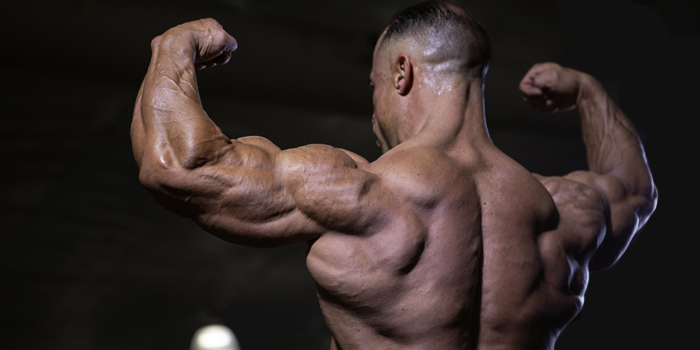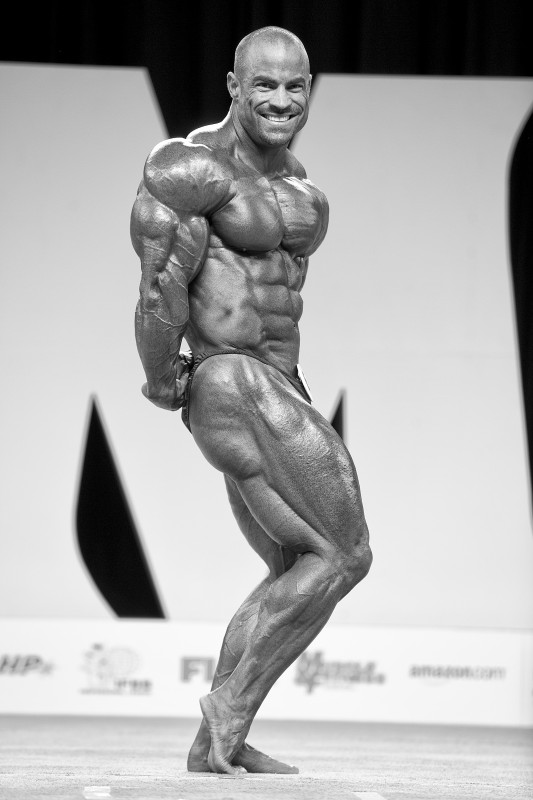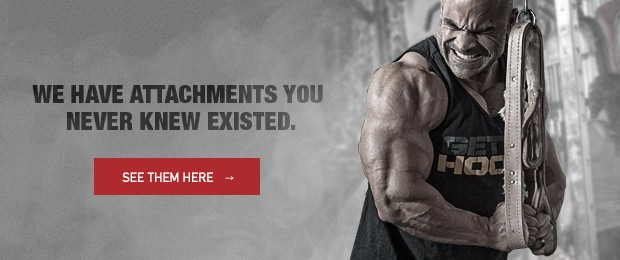
Most guys want big arms. "How big are your biceps?" is a close second-most frequently asked question to, "How much do you bench?" Many overlook the fact that arm circumference is largely a factor of triceps development. Therefore, if you want to add inches to the measuring tape, don’t ignore your triceps. Various aspects impact the speed in which your triceps get built, so I'll address each of them here separately.
Pounds
Unlike biceps, where I feel the pump plays a greater role than the pounds lifted, triceps need both. However, before you slap another plate on the bar for skullcrushers, don't lose sight of the fact that heavy pressing movements for chest and shoulders invariably work the triceps. With this in mind, the bulk of my "heavy" lifting for triceps finds its origin in compound chest training, not triceps isolation exercises.
RECENT: 5 Cable Exercises You Should Be Using
Case-in-point: my prep for 2009 202-pound Olympia, in which I placed fourth, included no direct triceps training outside of weekly circuit sessions designed to get my weight down via lactate-induced training. The preponderance of triceps stimulation came from compound chest and shoulder exercises.
2009 Mr. Olympia
It’s also the reason I include triceps-specific work immediately following every chest and shoulder workout. If you follow my training log you know I schedule one primary and one secondary chest, shoulder, and triceps workout per week. My primary workout, in particular, includes several exercises and a multitude of sets of heavy compound presses.
Pump
Triceps also respond extremely well to a fascia-splitting pump, best achieved via extended sets, supersets, giant sets, and drop sets. The overarching reason these training techniques generate a nasty pump is the time under tension. Maintaining tension throughout a given set and adding drop sets, giant sets, and supersets all in the absence of locking out elicits similar results to occluded or blood flow restriction training. A contracted muscle naturally restricts blood flow, rendering the lockout counterproductive when chasing a pump, due to a loss of tension on the muscle. Force your muscles to perform the work of holding the weight by stopping short of lockout on presses. Locking out thwarts the pump by transferring the weight to your joints, allowing your muscles to semi-relax.
Remaining cognizant of hand placement and wrist extension and flexion on triceps isolation exercises, such as the following supinate to pronate separate D-handle pushdowns, aids the pump even when contracting to the point of lockout.
Programming
Nothing halts triceps progress like inflamed elbow joints, which is why the order you program exercises is so important. I prefer programming my triceps work immediately after chest or shoulder training, because heavy compound pressing movements satisfy the subheading above (pounds). Training triceps after heavy pressing movements ensures adequate synovial fluid movement to aid lubrication of your elbow joints. Furthermore, triceps-specific work after pressing includes the added benefit of forcing you to lift lighter due to pre-fatigue — a built-in safety feature. With the heavy work completed via chest and/or shoulder pressing and my triceps fully warmed up, I waste no time chasing the pump, transitioning into isolation work and the techniques mentioned under the second heading above (pump).
Lastly, regardless of the body part being trained, I always focus on a stretch finishing exercise. The same holds true with triceps. I see quicker growth hitting a fatigued and massively pumped muscle from a stretched position. Never place a stretch-centric exercise first in a triceps workout. Perhaps one of the best ways to annihilate your triceps after a workout heavy in compound pressing movements is this pump-and-stretch finisher with an elitefts American Gridiron Bar.
Putting It All Together
The longer I train, the more I believe training frequency plays a greater role than training volume in regard to hypertrophy and body composition. For example, if you’re training legs two hours once per week, I suggest you try hitting them for one hour twice per week instead. This will technically be the same total weekly volume, but performed in two sessions instead of one. Lifting is anabolic, so provided you’re recovering appropriately (physically and mentally) from each session, you should do as many sessions in a week as is practical. To that end, adding triceps to the conclusion of chest and shoulder workouts provides a means to bump the frequency in which they get stimulated. Move pounds on the pressing movements, pump the heck out of the isolation movements, and program a stretch-dominant exercise to finish things off.











